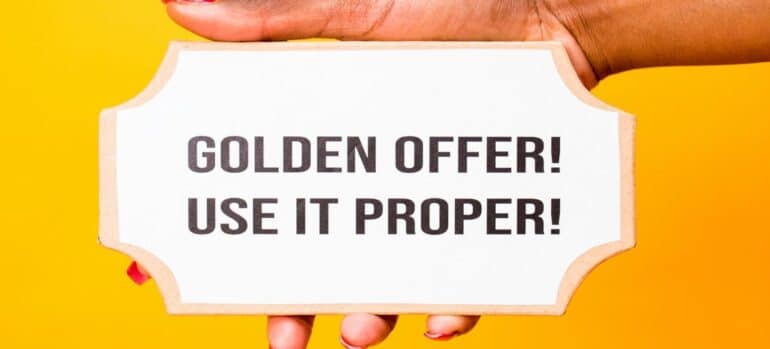How to use CRM to boost cross-selling and upselling rates
Book Your Demo
It is practically common knowledge that in order to increase your sales you need to find new customers. But, what companies surprisingly often forget to do is to motivate the newfound customers to engage with their brand for as long as possible. To do so, you need to know how and when to use cross-selling and upselling. So, with that in mind, we are going to cover how CRM can help you boost cross-selling and upselling rates.
What it takes to boost cross-selling and upselling rates
Boosting cross-selling and upselling rates can sometimes be more difficult than finding new customers. To find customers, you need to figure out what your customer base is, and then marketing your product and/or service to them. But, to engage with either cross-selling or upselling you need to have a much deeper understanding of your customers and their behavior. Before we get into that, let’s first go over what cross-selling and upselling are.
Understanding cross-selling and upselling
Cross-selling is when you recommend a product that is naturally connected to the product that the customer is buying. For instance, if they are buying running shoes, it is only natural to offer them socks, or a water bottle. If they are hiring a moving service, CRM software for moving companies should recommend packing or storage service. Some products simply go well with others, as do some services. Therefore, it is in your best interest to recommend these products to customers that have already decided to do business with you.

Upselling, on the other hand, is when you recommend a better product than the one that the customers are currently viewing. In the case of running shoes, you can offer a better brand or some that are better suited for a specific type of running. For moving service, you can offer long-distance moving, or full-service moving, if the person is only considering getting a truck. All in all, your goal here is to provide a better product and/or service, that your customer might not be aware of.
Boosting cross-selling and upselling rates
So, how does one go about boosting cross-selling and upselling? Well, as you might know from experience, doing so is far from easy. What is easy is to offers products or services to your customers that they don’t want. If you do so, you not only stand to annoy your customers. But, you can also lose the business that you would otherwise get from them. To make cross-selling and upselling work you need to gather customer data and then use it to your advantage. Only if you recognize the right customer and the right time, should you engage with cross-selling and upselling.
Using CRM tools effectively
When it comes to gathering customer data, you need to rely on CRM tools. Luckily, with the right tool, you can go further than simply gathering and also analyze your data for cross-selling and upselling. CRM tools can help you come up with strategies, categorize your customer base, and ensure that both your upselling and cross-selling efforts are effective. There is even CRM email tracking for movers, that can help with email marketing. So, do your part in finding the right CRM tool for the job.
Gathering the necessary data

First and foremost, you need to gather the necessary data. Even if you’ve figured out your customer base, you still need to gather extra data about them in order to effectively use cross-selling and upselling. For starters, we would advise you to collect the info about:
- Demographic background.
- Age.
- Employment.
- Gender.
- Location.
Knowing this will not only help you categorize your customers but will also help you figure out when to introduce cross-selling and upselling. After a while, you should be able to monitor your customer behavior and see whether your cross-selling and upselling efforts are effective. But, it is important that you build a decent foundation and that you outline your customers as soon as possible.
Categorizing your customers
Depending on your customer base, there can be dozens if not hundreds of different ways to categorize. Every piece of info is another potential way to separate your customers into different categories. But, when it comes to cross-selling and upselling, we would recommend that you separate your base into three categories:
- Cross-selling customers.
- Upselling customers.
- Others.
Cross-selling customers are usually those that don’t have much experience with your industry. They will most likely spend a lot of time learning by reading your blogs, or by asking pretty basic questions. For, them cross-selling is ideal, as your offer will seem like a friendly recommendation. More often than not they are simply not aware that they should get another item to go along with the one they are currently purchasing. So, your cross-selling offer will be more than welcome.

Your upselling customers are those that have certain knowledge, but not too much. They usually won’t read your blogs, unless they are quite niched. And they will likely go straight for your shop in order to get what they want. The easiest way to recognize them when they are only following certain trends in the industry (whether they are good or bad), and have no prior knowledge to speak of. In this case, upselling is the ideal way to engage them. You simply offer a better product and explain why it is better.
Everyone apart from these is the customers you don’t want to offer cross-selling or upselling. These can be people that are interested in your company or are tried and true professionals that know what they want. In either case, your cross-selling or upselling will simply come off as pushy.
Final thoughts
While you can boost cross-selling and upselling rates, it is important to recognize that these are only marketing tools. And, as such, have a time and place when they are best used. By recognizing the time and the place you can effectively use these to increase revenue. But if you use them when you shouldn’t, you can easily have counterproductive effects.
Stay Informed
Subscribe for industry
news & updates
"*" indicates required fields
